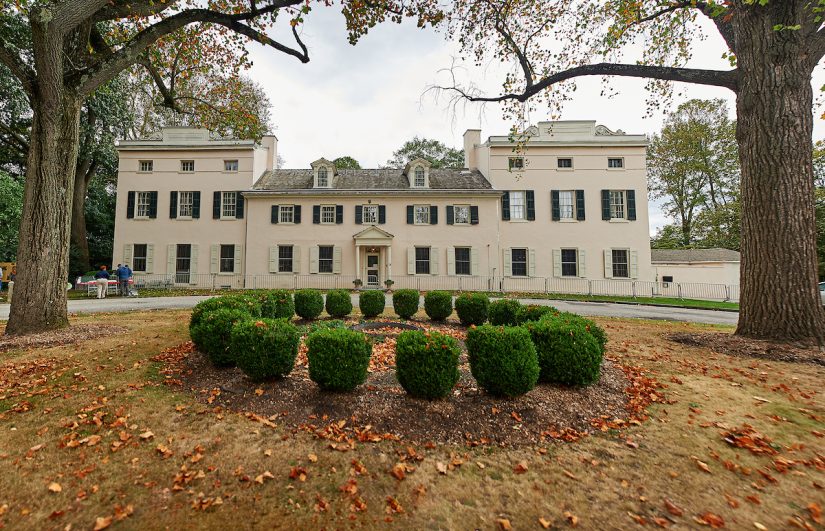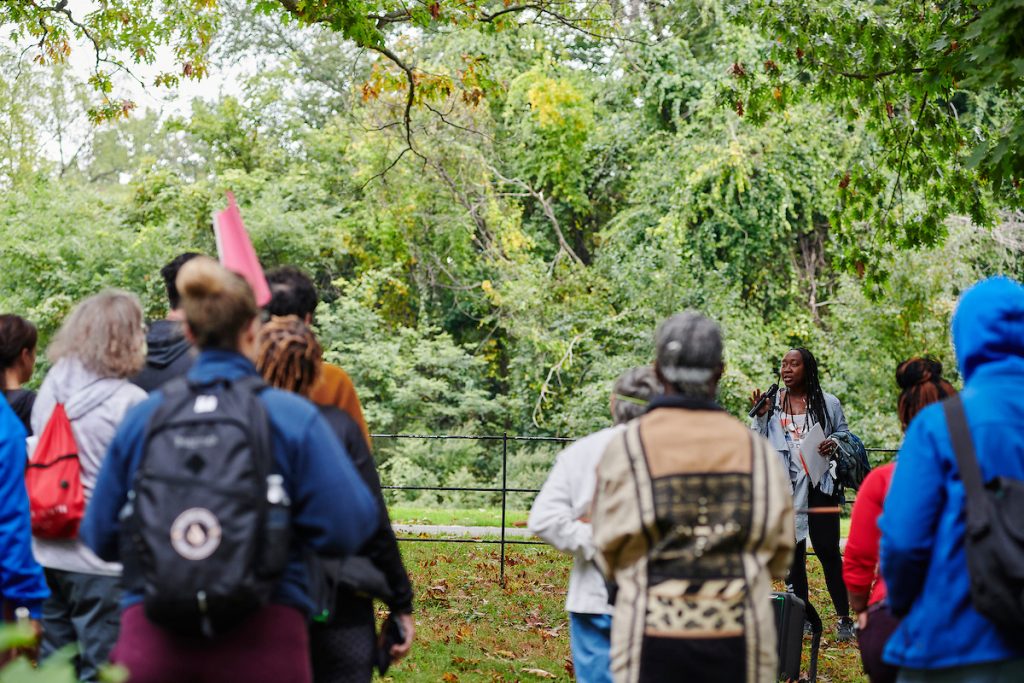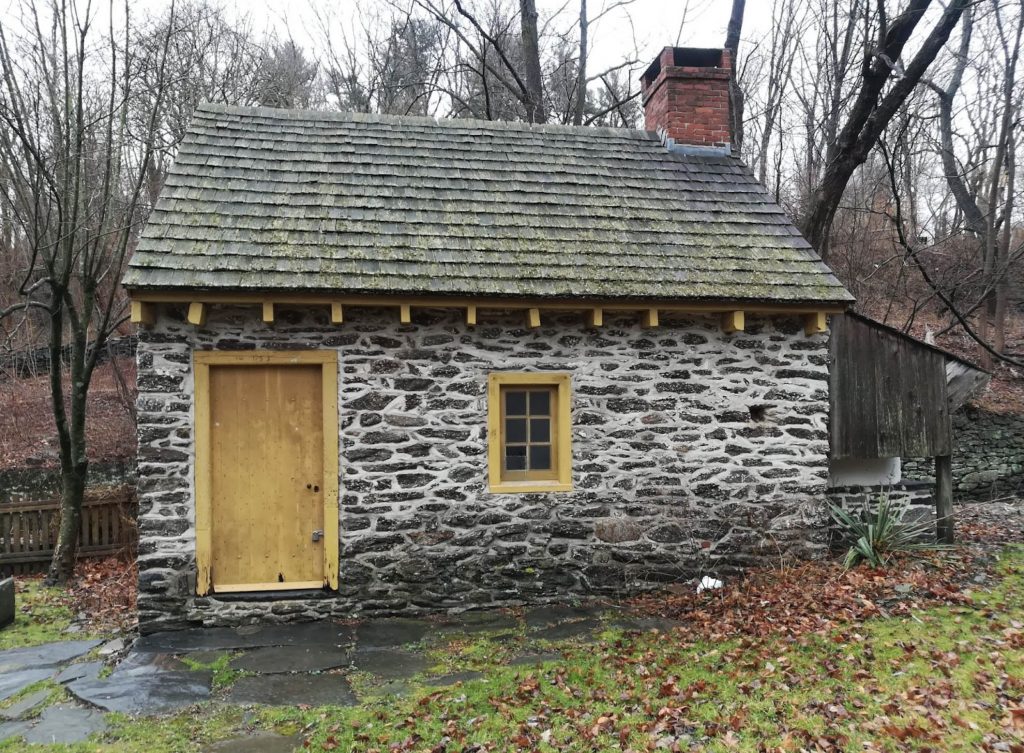In a modern world where things are quickly being produced, it may seem quaint to invest in something so old. The award-winning Preservation team at the Conservancy wants to change that. The team preserves and restores historic buildings, many ranging from 150 to 200 years old, in a way that is compatible with the original designs and respectful of their rich history. That is what the team is doing in Strawberry Mansion.

Historic Strawberry Mansion, currently run by a nonprofit organization called the Committee of 1926, is a house museum. Of the historic houses in Fairmount Park, it is the largest and holds a variety of 18th and 19th-century antiques, fine art, and collectible treasures.
As part of the Conservancy’s project, several elements of the building needed to be restored, including the 1st-floor front facade shutters, decorative wooden panels above the roof line, a section of rotted cornice, an area of detached stucco, and a damaged window sill.
Andrew Staples, Conservation Supervisor at the Conservancy, said “When we’re working on something that’s 150 years old and has been altered over the years, we’ll try to repair it using similar construction techniques and appropriate materials that won’t damage the structure.”
This project is different from projects the Preservation team usually takes on. They are not just mending things that have aged with time; they are also correcting mistakes made by others in previous repairs.
Around a decade ago, another contractor was hired to restore the Mansion’s shutters. They removed the old paint by dipping the entire shutter in a paint stripper. Unfortunately, once the scraping was complete, the shutters were not sufficiently neutralized. The remnant paint stripper caused the shutter hinges to rust severely and seize up, resulting in the premature failure of the glue joints in some areas.
“This is a slightly abnormal project for us,” said Staples, “We’re kind of redoing repairs that were recently done, not problems that have come over years and years of wear and tear.”
According to Staples, the most common problems in historic houses stem from water in some shape or form. Whether it is water getting into the building and ruining the plaster, or deterioration caused by water that creates an environment hospitable to insects and fungi, water is usually the root cause.
The team had to fix the shutters and clean the rusted hinges. After removing the rust, they outsourced the powder coating for extra protection from the elements.
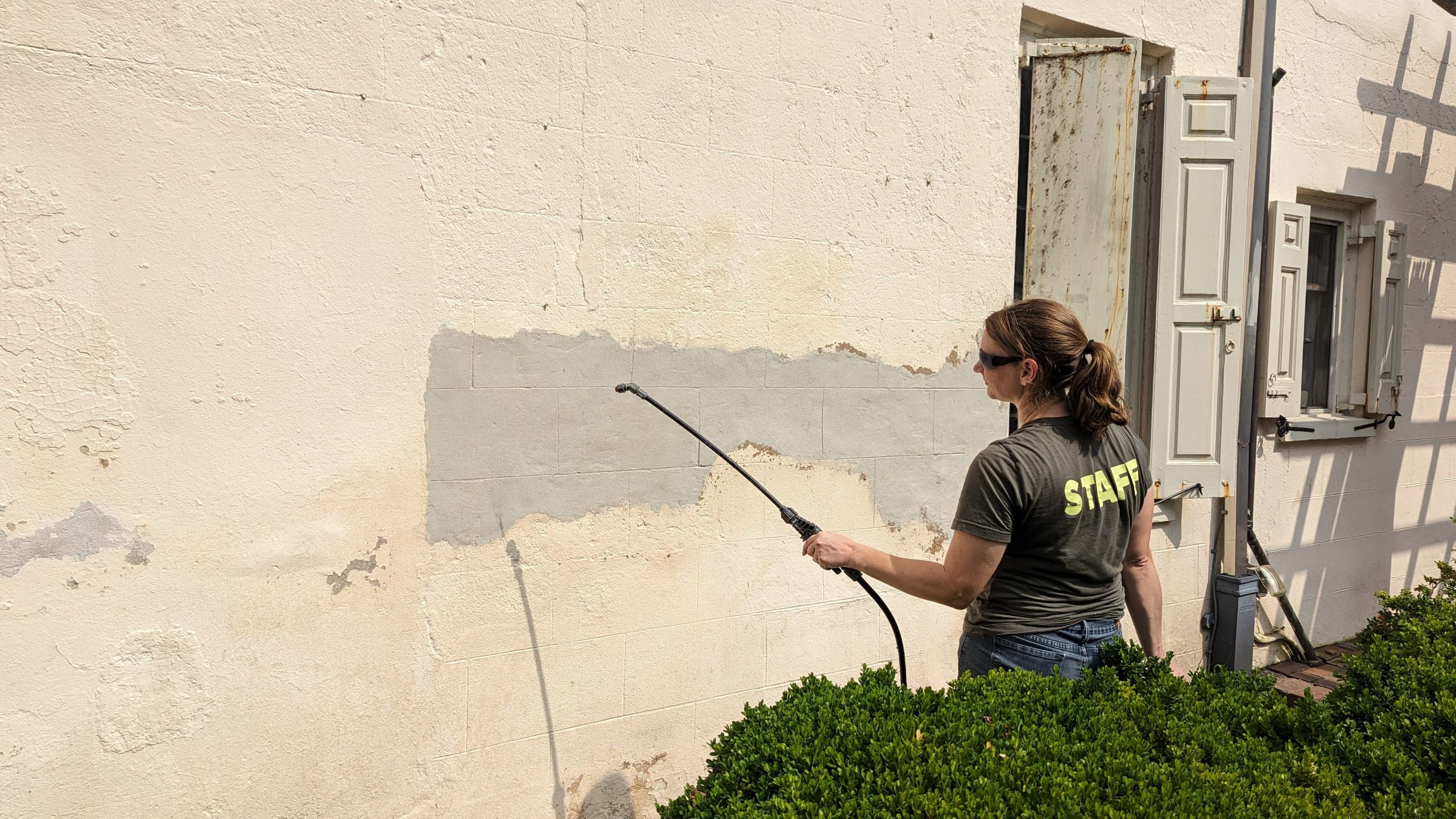
Additionally, a section of stucco was restored on the building. Stucco is a cement-like material that is applied to the outside of a structure in multiple layers. When repairing the stucco on the Mansion’s exterior, it was a matter of removing the loose stucco from the stone facade and then reapplying the material to an appropriate depth and finish.
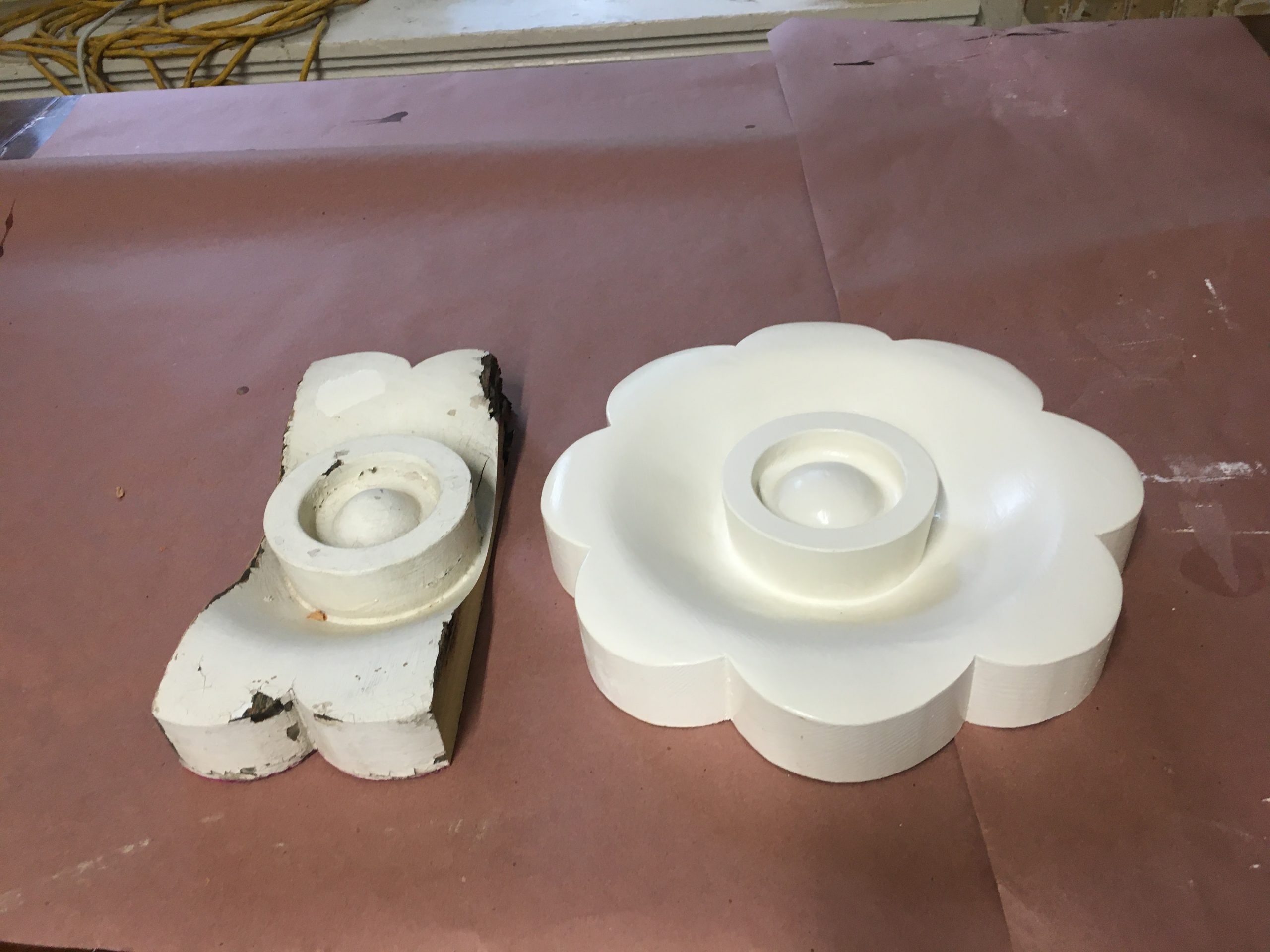
The decorative wooden panels above the roofline consisted of roof ornaments in a rosette form, which had to be taken down and remade due to the wood’s deterioration. The wood used in the previous restoration effort was poplar, which is hardwood and not what one would expect to see as a traditional exterior wood on a historic house. Historic house exteriors typically use old-growth white pine or other softwoods that tend to hold up well outside.
During the project, the team went to a place called Manayunk Timber: the only sawmill in Philadelphia. The sawmill salvages timbers from old warehouses and other buildings that are being torn down. Rather than disposing of them, Manayunk Timber will re-saw the timbers into custom sizes for particular projects. The team was able to find a large enough piece of old-growth yellow pine there and used it to recreate the decorative rosettes above the Mansion’s roofline.
As Staples elaborated on the other repairs being done on the Mansion, like the roof and the cornice, he provided a response to why he does what he does. Why conserve old structures?
“For me personally, I really like seeing how problems in buildings were solved in a traditional manner,” he said. “I like that these old buildings were designed to be repaired. Construction today is based much more on disposal; things like vinyl windows tend to only last two or three decades before ending up in a landfill.”
Staples went on to say that a lot of times, these traditional materials were selected by necessity, but also to a lot of benefit, they were locally sourced. They were not carbon-intensive and highly processed in the way that modern building materials are almost entirely plastic.
The Preservation team’s approach to repair rather than replace speaks to something much greater, too. One of the pillars of the Conservancy’s mission is to nurture our shared environment. This means that while things expand and new projects are being taken on, it is equally important to look at the structures already surrounding us in Fairmount Park and think about how to preserve them in a meaningful way. Not only are these efforts meaningful, they are also environmentally conscious. The most sustainable building is the one that is already built. By siding with adaptive reuse instead of sourcing materials for an entirely new structure, the team is bringing buildings to life for today’s park users while producing less waste.
